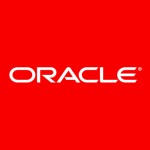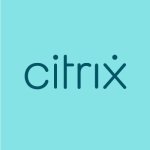What is our primary use case?
We are using KVM on-premises with Ubuntu 20.04 for the primary purpose of reducing operating expenses (OpEx) and to make maintenance and security easier for us. Of note, with this kind of virtualization technology, you can very easily create backups and restore data in case of disaster.
The services that we have running on our virtualized KVM environment are currently being used by everyone at the company, numbering in the range of thousands of end-users.
We also make use of Proxmox VE and, less often, VMware.
What is most valuable?
The most helpful aspect of KVM is the fact that the interface is so minimal. It includes just what you need to set up the VMs and manage them, and it's very simple to do so. You don't need to go with the typical black-screen command-line interface; instead, you just have a small graphical interface with which you can create VMs, edit them, upgrade calculations, and perform other administration tasks. And, because the interface is so lightweight, it has very low memory usage.
KVM, as a native virtualization solution, is a complete and fully adequate system for small businesses that need to reduce costs, and also to make maintenance easier.
What needs improvement?
One problem I have is that it's not very scalable when it comes to resizing the VM disk dimensions. For example, if you have initially set a virtual drive to 10 GB and you want to upgrade it to 15 GB, it's not that easy. For this kind of task, you have to get behind the command-line to set it, and this process isn't easy for a newcomer. However, if you have planned your virtualization project well and you know exactly how much RAM and storage space you will need for each different VM, you can simply set it and forget it, because everything you set is permanent.
Another improvement I would like to see is better functionality when it comes to making snapshots automatically while the VM is still running. For example, when a VM is running and you want to back it up, occasionally the VM backup that you obtain is not usable. Thus, I would propose that in the next edition of KVM there should be better "hot" backup features (as opposed to "cold" backups which are performed when the VM is powered down).
For how long have I used the solution?
I have been using KVM for about six years.
Buyer's Guide
KVM
April 2025
Learn what your peers think about KVM. Get advice and tips from experienced pros sharing their opinions. Updated: April 2025.
849,190 professionals have used our research since 2012.
What do I think about the stability of the solution?
KVM is extremely stable, to the point where I would give it 5/5 stars for stability.
What do I think about the scalability of the solution?
In terms of expanding the dimensions of your virtual disks, KVM is not easy to scale. Let's say you have a 10 GB disk, and you want to scale it up to 15 GB, the process requires that you enter a basic console and use the command-line interface to set the new size. It's not always an easy process for beginners. On the other hand, it is easy enough to scale other resources such as the CPU and RAM.
However, in general, when it comes to supporting a large number of users, it is scalable enough for us as we have thousands of users in the whole company using the services that are being virtualized with KVM.
Additionally, it's not hard to scale when talking about labor and maintenance. For example, I'm the only one administrating the infrastructure, by setting up and managing the VMs (e.g. adding VMs, editing configurations, etc.), for all these thousands of users in all different positions of the company.
How are customer service and support?
I provide support for the system myself and I have not yet needed additional support, mainly because I only use it for basic operations.
Which solution did I use previously and why did I switch?
KVM is a perfect alternative to commercial solutions in the market such as VMware, especially when it comes to stability. In my experience, KVM is more stable than VMware.
How was the initial setup?
I performed the initial setup and I did not need to contact support. Instead, I provided the support I needed by myself, in order to become comfortable with the basic operation of KVM. Compared to Proxmox, the setup is very similar, although admittedly Proxmox offers a more user-friendly interface to manage VMs.
In all, the setup took about two hours. If the internet connection is good, I install the operating system, then set up the hypervisor and perform the updates before installing the VMs. Two hours is about enough for this entire procedure.
What's my experience with pricing, setup cost, and licensing?
There is no cost involved in the use of KVM, as it is open source.
What other advice do I have?
On the whole, I would certainly recommend KVM to new users. Going further, I would give the following advice: although it's true that deep administration can be a bit difficult for newcomers who are not used to Linux, if you just follow the tutorial on KVM deployment and plan your deployment properly, you will be able to set up a stable virtualization system with ease. That's one of the perks of KVM — it's natively very stable once it has been set up correctly.
I would rate KVM an eight out of ten.
Which deployment model are you using for this solution?
On-premises
Disclosure: I am a real user, and this review is based on my own experience and opinions.


















